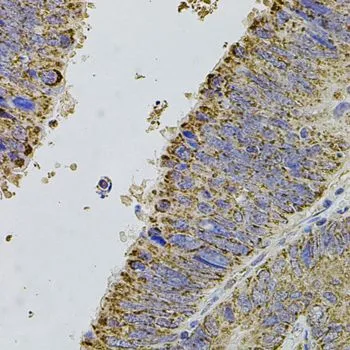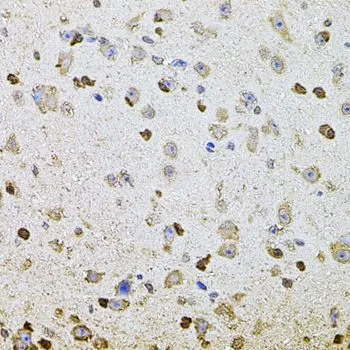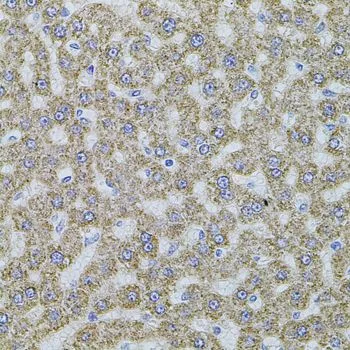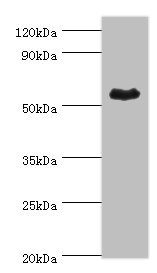
WB analysis of various sample lysates using GTX32431 ALDH1A1 antibody. Dilution : 1:1000 Loading : 25microg per lane
ALDH1A1 antibody
GTX32431
ApplicationsWestern Blot, ImmunoHistoChemistry, ImmunoHistoChemistry Paraffin
Product group Antibodies
TargetALDH1A1
Overview
- SupplierGeneTex
- Product NameALDH1A1 antibody
- Delivery Days Customer9
- Application Supplier NoteWB: 1:500 - 1:2000. IHC-P: 1:50 - 1:200. *Optimal dilutions/concentrations should be determined by the researcher.Not tested in other applications.
- ApplicationsWestern Blot, ImmunoHistoChemistry, ImmunoHistoChemistry Paraffin
- CertificationResearch Use Only
- ClonalityPolyclonal
- ConjugateUnconjugated
- Gene ID216
- Target nameALDH1A1
- Target descriptionaldehyde dehydrogenase 1 family member A1
- Target synonymsALDC, ALDH-E1, ALDH1, ALDH11, HEL-9, HEL-S-53e, HEL12, PUMB1, RALDH1, aldehyde dehydrogenase 1A1, 3-deoxyglucosone dehydrogenase, ALDH class 1, ALHDII, RALDH 1, acetaldehyde dehydrogenase 1, aldehyde dehydrogenase 1, soluble, aldehyde dehydrogenase, liver cytosolic, epididymis luminal protein 12, epididymis luminal protein 9, epididymis secretory sperm binding protein Li 53e, retinal dehydrogenase 1, retinaldehyde dehydrogenase 1
- HostRabbit
- IsotypeIgG
- Protein IDP00352
- Protein NameRetinal dehydrogenase 1
- Scientific DescriptionThe protein encoded by this gene belongs to the aldehyde dehydrogenase family. Aldehyde dehydrogenase is the next enzyme after alcohol dehydrogenase in the major pathway of alcohol metabolism. There are two major aldehyde dehydrogenase isozymes in the liver, cytosolic and mitochondrial, which are encoded by distinct genes, and can be distinguished by their electrophoretic mobility, kinetic properties, and subcellular localization. This gene encodes the cytosolic isozyme. Studies in mice show that through its role in retinol metabolism, this gene may also be involved in the regulation of the metabolic responses to high-fat diet. [provided by RefSeq, Mar 2011]
- Storage Instruction-20°C or -80°C,2°C to 8°C
- UNSPSC12352203






![IHC-P analysis of cerebellum tissue (left) and lung cancer (right) using GTX82775 ALDH1A1 antibody [5A11].](https://www.genetex.com/upload/website/prouct_img/normal/GTX82775/GTX82775_20170912_IHC-P_w_23061322_714.webp)
![IHC-P analysis of human testicular carcinoma tissue using GTX34400 ALDH1A1 antibody [ALDH1A1/1381].](https://www.genetex.com/upload/website/prouct_img/normal/GTX34400/GTX34400_20200115_IHC-P_1184_w_23060801_566.webp)

